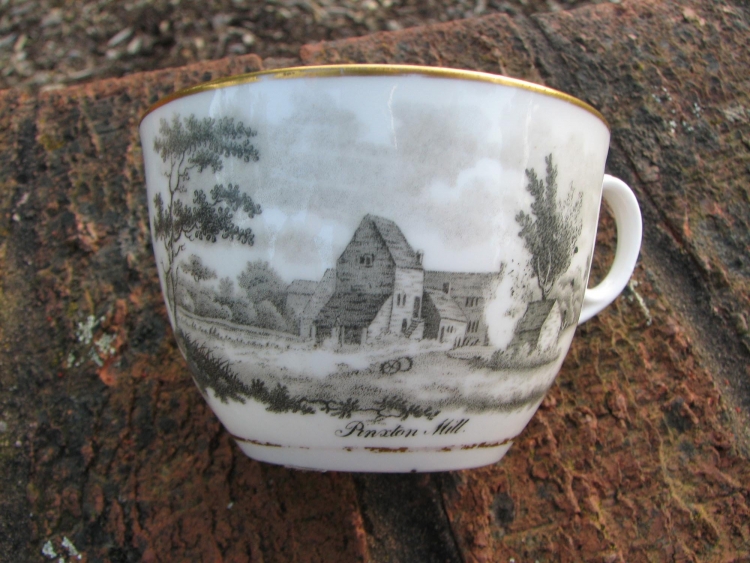John Boucher has pointed to new evidence of Pinxton Mill in Derbyshire. Pictures taken by Hugh Potter show the mill, which burnt down in 1844, depicted on a cup.

The mill is not listed in Alan Gifford’s excellent Derbyshire Watermills (£5 from the Midlands Mill Group or from http://shop.millsarchivetrust.org/ )
John writes: These are the only known pictures (one illustrated; the other is available on request to info@millsarchive.com) of Pinxton Mill, Derbyshire (SK455545), which burnt down in 1844. They are beautifully hand painted on a small porcelain teacup held in the John King museum in Pinxton – Not Pinxton porcelain, unfortunately, I think they said Newhall porcelain.
Mill lane still exists, the river Erewash is the border between Derbyshire and Nottinghamshire. The attached plan (available on request – see above – for research & private study) is from the British Waterways archive in Leeds and was prepared by the Midland Railway about 1880, apparently to show the flooding problem which is still a problem today! The two tracks of the Midland Railway still exist (all the others have gone) The Midland Railway was built about 1839, while the mill was still working. It is not recorded whether or not a spark from an engine caused the fire! The Mill stream is marked as disused on the right flowing west (towards the left of the plan), the site of the mill is shown, and also the tailrace back to the Erewash. The group of buildings to the left of the tailrace, across the road, was the famous Pinxton Pottery (now demolished, site used as a car breakers yard). Proceeding further left you can see the former gas works and then the end of the Pinxton arm of the Cromford Canal (1793), which we are currently trying to restore. Across the bottom is the track of the early Mansfield and Pinxton tramway (1813). A little further along the canal side is the Boat Inn, still there but closed for renovation, which claims to be the first railway (tramway) ticket office in the country.
Hugh points out that two photographs of the cup are his own but we should credit the Friends of the Cromford Canal (see their website at http://www.cromfordcanal.org.uk)
Does anyone have more information or pictures?
